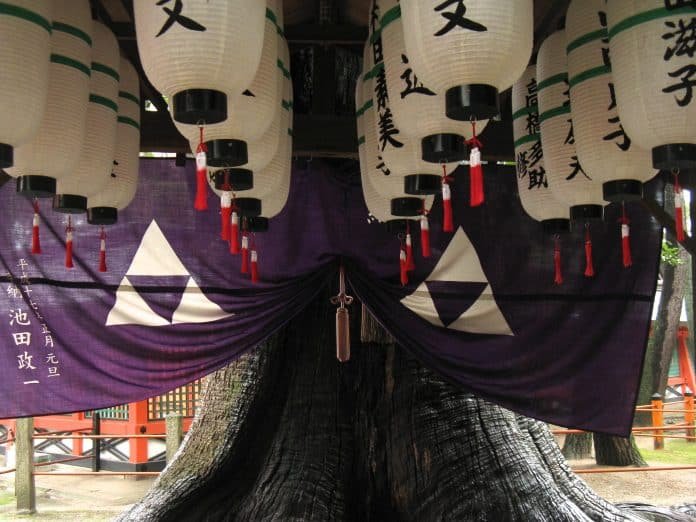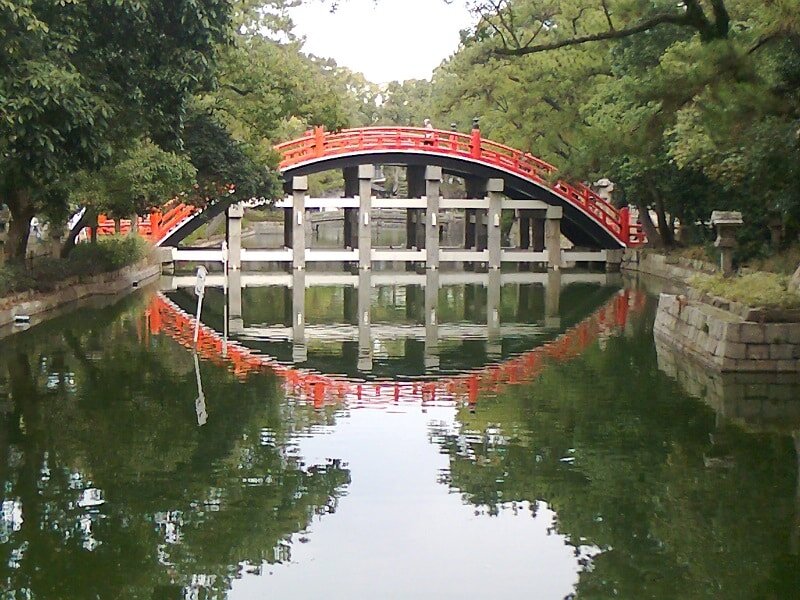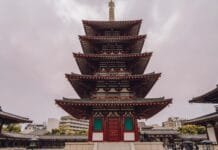
Many visitors to Osaka say that the city seems to be split into two distinct parts.
There are the parts of the city that are modern, energetic, and heavily influenced by technological trends. Places like Umeda, Namba and Tennoji would fall into this category.
Then on the other hand there is the more sedate, spiritual and old-town side to the city. One that feels like it hasn’t really changed in a very long time. Places like Ikuno, Yodogawa and Minato Ward would come under this heading. As too does the subject of today’s discussion, Sumiyoshi Ward.
Situated at the southern tip of Osaka, and bordering Sakai City, which sits just across the Yamato River, Sumiyoshi definitely feels like the part of Osaka’s “old town” districts that has been least spoiled by modernization.
The ward itself draws its name from Sumiyoshi Taisha, a large Shinto shrine with a long history.
Indeed, Sumiyoshi Taisha is actually one of the oldest shrines in all of Japan. Predating the existence of Buddhism in the country by about three centuries.

The original shrine dates from the 3rd century, but it has played a major role in certain aspects of Japan’s history over the past 1700 years.
It all started in the year 291, when Empress Jingu, the legendary leader of Japan at the time, ordered the creation of the shrine as an addition to the 3 other shrines dedicated to the “Sumiyoshi Sanjin” Three gods, said to aid people in times of adversity or when they face new challenges.
In addition to Osaka, there are three other Sumiyoshi Shrines, in Nagasaki, Fukuoka and Kobe. It has long been a tradition for pilgrims to journey around all of them.
Today, Osaka’s Sumiyoshi Taisha serves as focal point for the local community, especially at New Year.
It has become something of a tradition in Osaka, and one I myself have practiced a few times, to visit Sumiyoshi Taisha on New Year’s Day and ask for the gods’ intervention to help you get ahead in the months to come.
When you go to Sumiyoshi Taisha on January 1st, you will actually notice a series of lines forming for different kiosks. To the passive observer, you could be forgiven for wonder what the hell is going on. There is actually a very specific method to all this activity.
Each of these kiosks allows you to buy a charm, to convey a specific kind of good luck on you for the coming year.
There are charms for financial success in your work or business, charms for finding love,for couples planning to get married or move in together soon and even a special charm for couples hoping to conceive a child this year.

Maybe you believe in it, maybe you don’t, but whatever your views on Shinto or religion in general, I say it can’t hurt to ask for a little extra help from somewhere!
You will also notice at Sumiyoshi Taisha that the aesthetic design of the shrine buildings is different from what you may have seen at shrines and buildings elsewhere.
Whilst most of the temples in and around Osaka conform to the template laid down by Shitennoji Temple, Sumiyoshi Taisha predates that temple by centuries. As one of the oldest religious structures in all of Japan, its design isn’t really based off anything that came before.
Though almost all of the complex has been rebuilt at various points in the last century or so, much like castles and other historical monuments across Japan, where reconstruction has been necessary, meticulous care has always been taken to ensure it conforms to the original design, both in look and layout.
The differences between Sumiyoshi Taisha and later shrines and temples are subtle but also fairly easy to spot.
For example, the buildings employ straight roofs, as opposed to the curved structures we see in most other, later designs.
Also, with the three main buildings running alongside each other, and facing west, this is quite a major departure from the strict adherence to Chinese-imported conventions on geometry and layout, which became the norm later on.
With so many temples and shrines throughout Osaka and indeed all across Japan as a whole, it could be easy to think that if you’ve seen one, you’ve seen them all, but Sumiyoshi Taisha goes to show that this clearly isn’t the case.
Sumiyoshi also has two riverside walking trails that make for a great way to unwind and relax away from the busier, more tourist focused streets in and around Sumiyoshi Taisha.
The banks of the Hosoe River in the west of the district and the Yamato River in the south of the ward have recently restored promenades that are perfect for gentle walks, jogging or just sitting down and enjoying some quiet reflection.
As the perfect contrast to the busier side of Osaka, Sumiyoshi Ward is hard to beat!




















